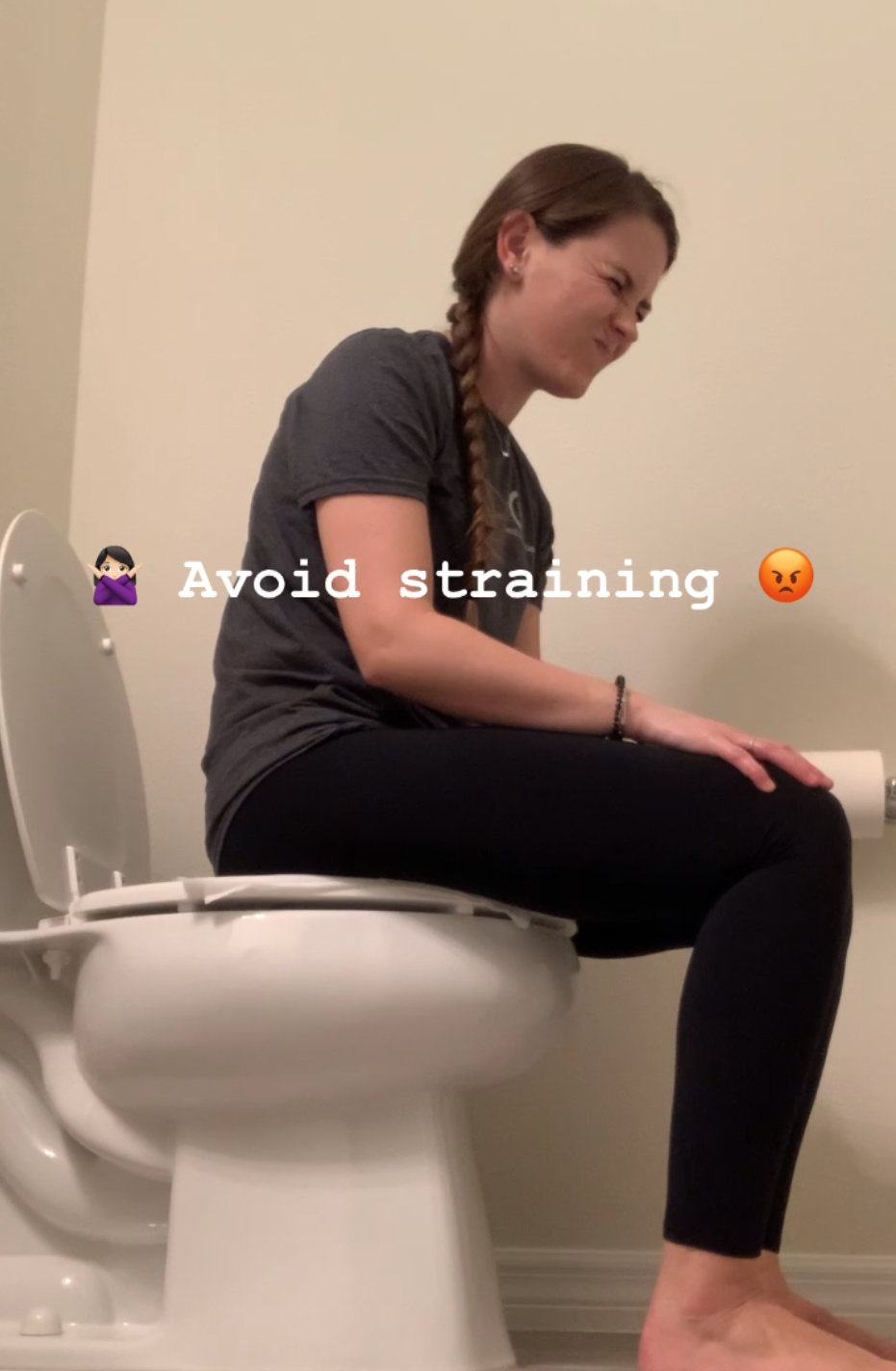Toileting 101
To continue with our dive into the pelvic floor, I bring you…
Toileting 101
To get the full effect of these screengrabs, head on over to our Facebook or Instagram page and have a little laugh at my toileting video.
So here we go!
Just Stop
Public spaces may be a little cringeworthy lately but build your birds nest and sit on the toilet!
Hovering limits the ability of your pelvic floor to relax and allow urine to pass without straining.
There are two nervous systems that relate to your pelvic floor, sympathetic and parasympathetic.
Sympathetic = fight or flight ….relating to your pelvic floor —> it means your muscles are contracted BUT your bladder is relaxed.
Parasympathetic = rest and digest ….relating to your pelvic floor —> it means your muscles are relaxed BUT your bladder is contracting.
Yea, stop that too
Seems counterintuitive to strain to urinate when the pressure created to expel urine will work better when you’re relaxed.
Same thing goes for bowel movements, although your bladder isn’t involved.
There is a specific muscle of your pelvic floor, the puborectalis, that controls when stool can pass out of your rectum. When you’re straining, that muscle is contracting, causing the rectum to be cinched off. When you’re relaxed, so is that muscle, which allows the rectum to straighten out slightly and allow the stool to pass more easily without having to actively push it out.
Don’t even get me started about the pressure that straining puts on your pelvic floor that can lead to pelvic organ prolapse (another topic for another day).
Trouble passing stool?
What’s your water intake looking like? Do you drink enough water or is it only a few sips here and there throughout the day?
Hydration is important for improving stool passage as it allows your stool to be more pliable upon exiting the rectum, limiting the amount of straining required.
Try utilizing a Squatty Potty or toilet paper rolls under your feet. You can assist the relaxation of the puborectalis muscle by having your knees elevated above your hips and leaning forward with a neutral spine.
Squatty Potty
squattypotty.com starting at $25
Toilet Paper Rolls
Colon massages are often helpful as well, but we’ll review that another day.
If you have questions or concerns, please feel free to call the office at 904-516-8121 or email me at Lauren@vighettiPT.com and we can discuss next steps.




